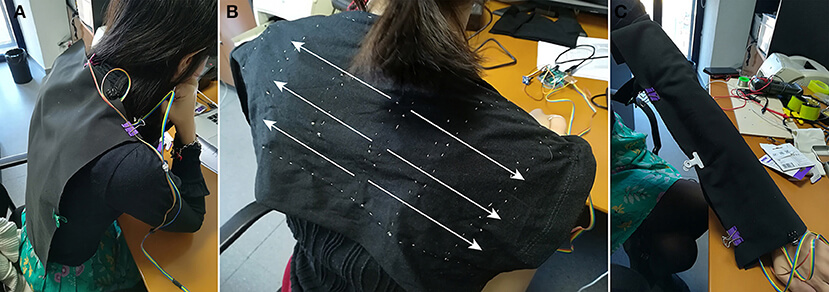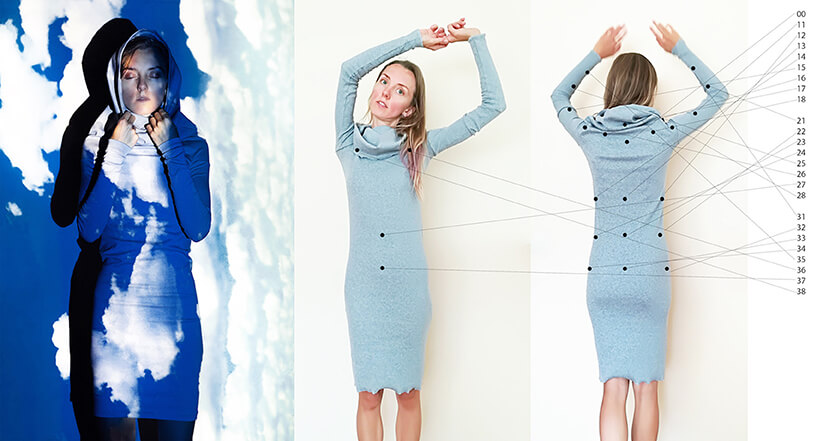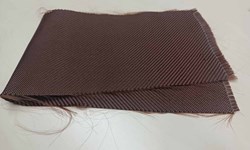
A recent project conducted by a multidisciplinary team of researchers has been exploring how e-textiles can affect our physical and emotional behaviour. Jessica Owen reports.
Fashion is undergoing a revolution at the moment. From the sustainability movement to digitalisation, the industry could look quite different in a few years’ time. And now, research is underway to explore whether clothes could serve another purpose – to improve our mental health.
Mental health conditions such as stress, anxiety and depression are increasing worldwide. In fact, two of the most common mental health conditions, depression and anxiety, cost the global economy US$1tn each year, according to the World Health Organisation.
These problems can have a substantial effect on all areas of life, from school or work performance, to relationships with family and friends, through to the ability to participate in the community. And with the ongoing Covid-19 pandemic, it’s fair to assume that more and more people are experiencing these issues.
Although the severity of mental health conditions and their treatments vary, mindfulness is often cited as an effective way for a person to concentrate on the present, which helps reduce levels of stress and anxiety. There are apps, books and online tools that people can use to practise mindfulness, but wouldn’t it be impressive if the clothes you wear could elicit the same response?
This is exactly what researchers Ana Tajadura-Jiménez, Aleksander Väljamäe, and Kristi Kuusk are interested in exploring. The team recently organised two user studies to see if physical sensations created by e-textiles could affect body perception and emotional responses.
“Our starting point for the research was the Magic Shoes project,” says Tajadura-Jiménez, Universidad Carlos III de Madrid and University College London.
“In that project, and our previous The Hearing Body project, we have pioneered the use of sound to elicit changes in body perception and looked at the influences on motor behaviour and emotional state.”
The Hearing Body Project was carried out a few years ago. The concept of this was to investigate the important of audition for body representation. The Magic Shoes Project then followed on from this. This study followed a novel approach that addressed the emotional and psychological barriers in physically inactive people by using sound feedback to alter the way they perceive their body. Essentially, by listening to different sounds, the researchers found that people’s legs felt lighter and longer, which encouraged them to walk and even run.
“From that notion, in the Magic Lining Project, we then thought of artistic expressions for changing one’s self-perception through clothing,” adds Kristi Kuusk, Estonian Academy of Arts.
The Magic Lining Project took the Magic Shoes Project one step further and explored an alternative direction through the use of e-textiles and vibrations. The project focused on the possibilities for altering people’s self-perception through the garment’s inside and proposed that a garment could allow the wearer to feel as if their body were made from a different material.
These projects then led to the current research – altering one’s body perception through e-textiles and haptic metaphors. The purpose was to see if vibrations could affect a person’s body perception, which in turn could affect their emotional state.
To test this hypothesis, the researchers conducted two experiments with two different prototypes of their Magic Lining clothing. The first prototype allowed generating vibration patterns that could potentially translate into bodily sensations when experienced through the inside of the garment. The system comprised 21 vibration motors placed on a jersey textile, connected with a Shieldex conductive thread.
The team conducted six possible combinations of location and pattern altogether (three body locations with two vibration patterns each). The participants were subjected to a randomised order of the sensations and were then asked to express their reactions and feelings. The team found that patterns starting in the centre of the back and moving outwards made the participants feel like their body was made of air, water, or sand, and reported feelings of relaxation, strength and confidence, for example.
Learnings from this first experiment were then used to inform the prototype for the second experiment. This second prototype consisted of 25 motors on felt fabric. Based on the results from the first experiment, the team built what it refers to as ‘mind maps’ to come up with three distinct vibration patterns and two textiles (fluffy, nonwoven polyester and black waffle polyester) to deliver sensations close to the following concepts: water; cloud; and rocks.
In the second experiment, each participant placed their hand on the two fabric samples and experienced each of the three vibration patterns. Based on their responses, the researchers concluded that there was a correlation between the way the materials made the individuals feel and the intended concepts.
“People already wear certain clothes to make them feel more confident or comfortable in certain circumstances,” says Tajadura-Jiménez. “But the idea of a business suit or a cocktail dress is more about how you present yourself to others, how they make you look from the outside.
“Our concept is different; we are interested in promoting perceptions that are imperceptible to others. We can show that changes in body perception induced by sensory feedback can result in changes in people’s motor and social behaviour, emotional state, body satisfaction and even self-identity. So, the idea is that if I perceive my body as different (eg bigger, stronger, lighter), I may in turn feel calmer and more confident and this will shape my interactions and attitudes with the world and with others.”
Although this research is novel and exciting, Kuusk says that it will be a while yet until ‘sensorial fashion’ becomes part of our daily lives. For now though, it allows the team to explore the ideas of fashion, clothing, self-perception and e-textiles from different perspectives.
One of the key challenges that needs to be considered before sensorial fashion takes off is personalisation. We are all different and our perception will have a preference for different patterns and stimulation points.
“People may differ on their individual sensitivity to the sensory feedback, preferences, sensory imagery, but also different body ideals or concerns,” explains Tajadura-Jiménez.
“In order to craft these sensory experiences leading to a fashion revolution, there is quite a bit of research needed to understand how to maximise the desired effects of the sensory experience elicited by clothing.”
It’s definitely a long-term vision that the researchers have, but there is so much potential here and the trio has already discussed a number of future directions.
“First, multisensory prototypes where vibrotactile stimulation is paired with sound (or other sensory feedback) is a very promising direction where auditory-haptic metaphors could be more easily created using minimalistic tactile stimulation,” says Aleksander Väljamäe, School of Design Technologies, Tallinn University.
“Another multisensory pairing could be related to chemosensing and chemo signalling. Our future studies will look at the effects of bringing together multiple sensory signals, while taking into account the principles of multisensory perception.”
Elsewhere, it’s possible that the research could be developed into a neurofeedback system. In the current study, the prototypes were only used for delivering sensations, but the researchers say that they could potentially create a closed loop system where, for example, your clothing could pick up your stress level faster than you realise it and provide gentle feedback.
Thirdly, this research could be used to advance haptic clothing. For example, the technology could be used in social settings and combined with other sensors to create different experiences. For example, clothes could be used passively in a new type of cinema, or actively in a participatory theatre environment.
In light of the ongoing Covid-19 pandemic, this research also has the potential to allow people to socially interact at a distance. Tajadura-Jiménez says: “We have also been discussing the possibility of having people interact through their clothing. For instance, one could activate a particular vibration pattern in another person to induce a particular sensation, or several people could ‘resonate’ together. This opens another new field of research, which may be especially relevant in current Covid-19 times in which social touch has been dramatically reduced.”
Fashion as a field is changing a lot. And some of the pinpoints in fashion education are referring to changing more towards providing positive emotions and care to people rather than new looks that might cause negative emotions instead. In that light, the team believes that it might find very meaningful collaborations with fashion designers in the near future.
The recent boom in smart clothing projects such as Jacquard by Google and the Tesla Suit prove that these innovations already have a place in society. Not only can they improve the efficiency of everyday life and tend to our physical needs, but the research by Kuusk, Väljamäe, and Tajadura-Jiménez prove that there is an opportunity here for e-textiles to tend to our emotional and mental health, too.
The current research mentioned in this article was partially supported by PSI2016-79004-R Magic Shoes project grant (AEI/FEDER, UE) from Ministerio de Economía, Industria y Competitividad of Spain. The Magic Lining VERTIGO project is part of the STARTS programme of the European Commission, based on technological elements from the project Magic Shoes. AT-J was supported by RYC-2014–15421 grant from the Ministerio de Economía, Industria y Competitividad of Spain and AV was supported by the Estonian Research Council grant PUT1518.
Have your say. Join the conversation and follow us on LinkedIn





